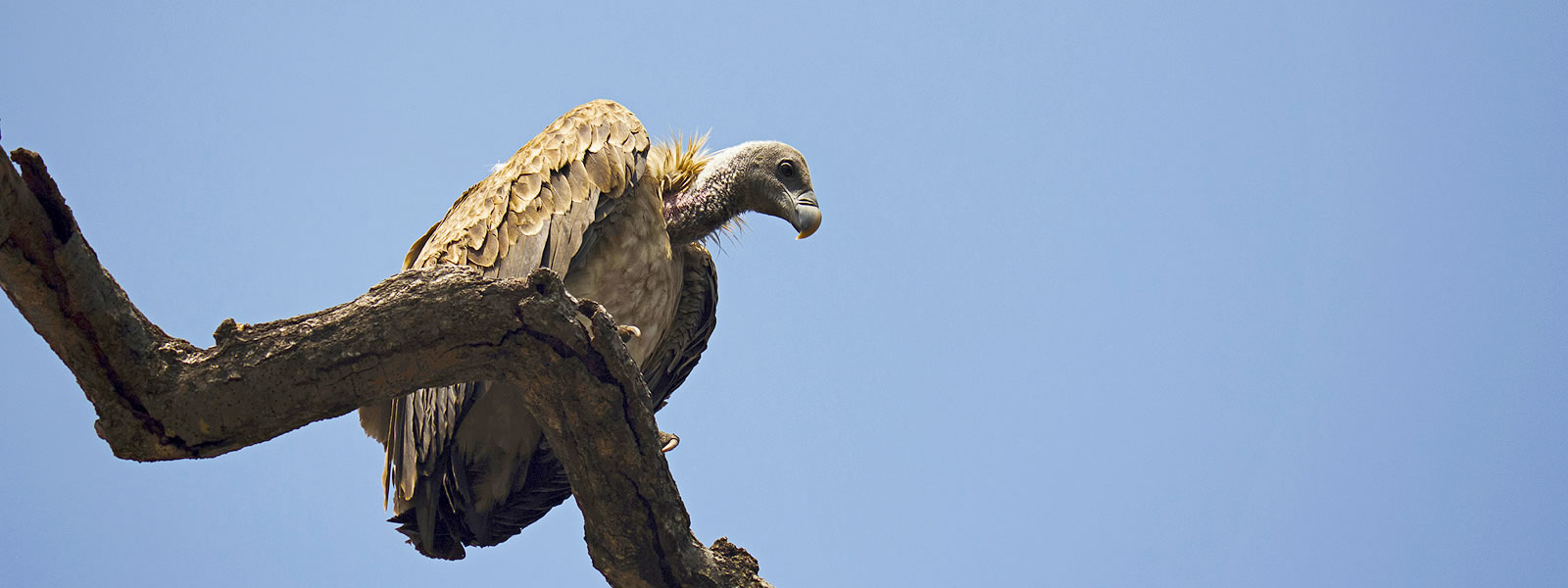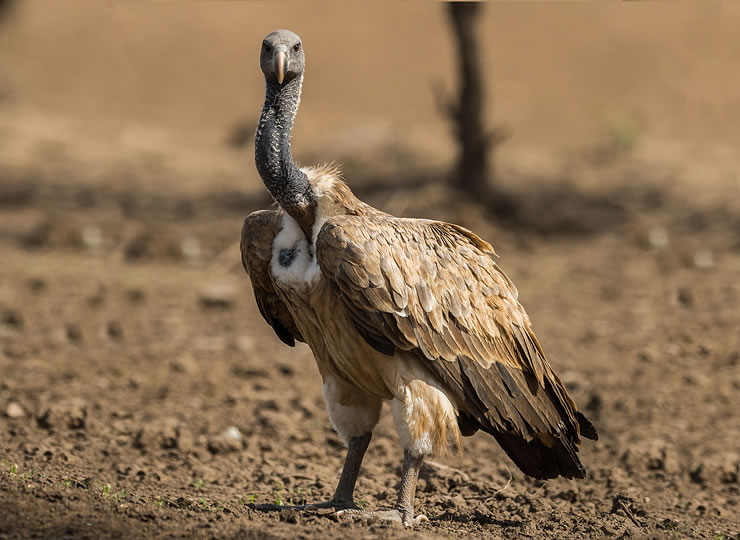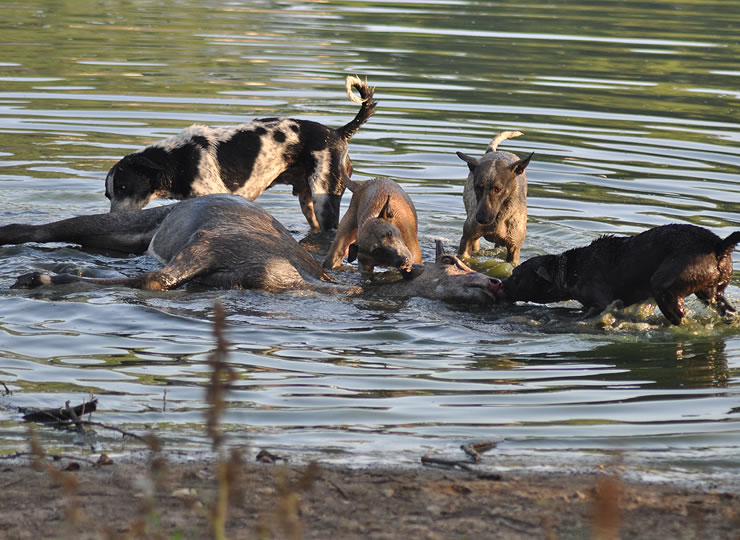Indian Vulture
Gyps indicus

Even scavengers can be keystone species. Vultures are the cleanup crew in certain ecosystems, picking carcasses clean and helping to prevent the spread of disease.
Range map of the Indian vulture

Although now critically endangered, the Indian vulture was once found across most of the Indian subcontinent. Photo credit: iStock/Getty Images Plus
Although scavengers may seem like unlikely candidates for keystone species, they can play a crucial role by removing rotting meat that would otherwise spread disease. The case of the Indian vulture shows what can happen when certain scavengers almost disappear.
In the 1980s, Indian farmers began treating their livestock with an anti-inflammatory, pain-relieving drug similar to ibuprofen. When livestock animals eventually die, their remains are often left to be consumed by scavengers, either in fields or at carcass dumps. The remains of livestock that had been treated with the drug turned out to be toxic to vultures, and many of the vultures died after eating them.
The decline in vultures revealed their value to environmental health. For example, vultures have strong stomach acids that kill many pathogens. As vultures died out, these pathogens became more common — leading to diseases in humans and other animals, including tuberculosis, anthrax, brucellosis, and foot-and-mouth disease. As the rotting carcasses increased, some of the pathogens also entered the water supply, which worsened the water quality.
Without as many vultures to compete with, populations of other scavengers, such as crows, rats, and feral dogs, grew rapidly. Some of these scavengers were dangerous to humans. The increase in the number of feral dogs, for example, led to many more dog bites and human deaths from rabies. Scientists estimate that these dogs caused almost 50,000 deaths from 1992 to 2006.

Feral dogs and other scavengers thrived after vultures disappeared. Photo credit: iStock/Getty Images Plus
Scientists eventually realized the impacts of the vultures’ disappearance and figured out what was killing them. The livestock drug was banned in India, and the vulture population started to recover.